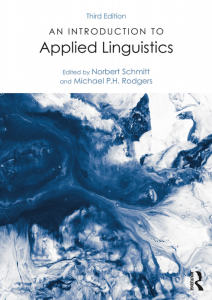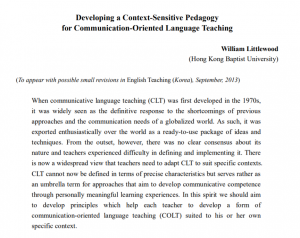PDF #115 – An Introduction to Applied Linguistics Schmitt and Rodgers, 2020

The book An Introduction to Applied Linguistics Schmitt provides a complete, authoritative and up-to-date overview of the field. Divided into three sections covering: a description of language and language use; essential areas of enquiry; and the four skills and testing, the third edition of this highly successful textbook provides.
Norbert Schmitt
Norbert Schmitt is Professor of Applied Linguistics at the University of Nottingham, UK. He has taught in the areas of vocabulary studies, applied linguistics, SLA and TESOL methodology. He has published extensively. Professor Schmitt is a regular presenter at applied linguistics conferences. He also travels widely consulting and teaching on vocabulary issues.
Michael P.H. Rodgers
Michael P.H. Rodgers is Assistant Professor in the School of Linguistics and Language Studies at Carleton University, Ottawa, where he teaches TESOL methodology and SLA theory. His research interests include vocabulary acquisition and language learning through television.

One of the main articles in An Introduction to Applied Linguistics
It brings the article Second language acquisition Nina Spada and Patsy M. Lightbown on page 111 that focuses on second language acquisition research focuses on the developing knowledge and use of a language by children and adults who already know at least one other language. This field of research has both theoretical and practical importance.
The theoretical importance is related to our understanding of how language is represented in the mind and whether there is a difference between the way language is acquired and processed and the way other kinds of information are acquired and processed. The practical importance arises from the assumption that an understanding of how languages are learned will lead to more effective teaching practices. In a broader context, a knowledge of second language acquisition may help educational policy makers set more realistic goals for programs for both foreign language courses and the learning of the majority language by minority language children and adults.
After reading “An Introduction to Applied Linguistics Schmitt”, you can check important issues for ESL teachers on the section PDFs. And visit my channel by YouTube.




